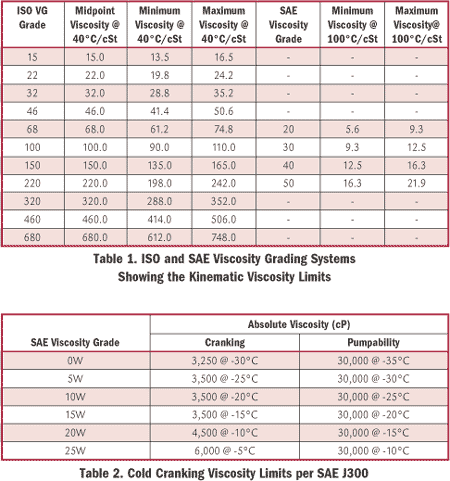Originally Posted By: OVERKILL
BTW, here's the viscosity chart from the main page:
http://www.bobistheoilguy.com/viscosity-charts/
SAE 5 and SAE 5w are not the same thing.
The "winter" designations, 0w, 5w, 10w, 15w 20w, 25w are all based on CCS at a given temperature.
Here's a good chart:
and a link to the article it came from:
http://www.machinerylubrication.com/Read/411/oil-viscosity
With a multi-grade, you have an oil that behaves like a given "winter" weight oil when cold, but also has the viscosity characteristics of a 20, 30, 40, 50....etc at 100C.
Depending on the VI of the base stocks used, this will determine what your base viscosity is, whether you need to use polymer to get your final multigrade split....etc.
Historically, with an inexpensive multigrade oil, light base oils were used and thickened with polymer to get the oil to behave as desired. Of course these polymers would degrade, causing the oil to shear and the polymers would also cause varnish and sludge as they broke down. This is why GM warned against the use of 10w-40 "back in the day".
With the advent of high VI base oils and more stringent spec's and approvals, today's multigrade oils are based on base stocks with a high natural VI, meaning that far less polymer is used, and in some cases no VII's are added at all. AMSOIL makes a few oils like this, as does Redline and this is likely the case for many of the mainstream synthetics.
That being said, today's VII's are significantly better than their predecessors. And combined with better base oils, you have lubricants that are more shear stable and require very little polymer to achieve their final characteristics.
Thanks overkill. I love info. And it's in terms I can understand.
WOOHOO



